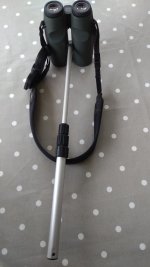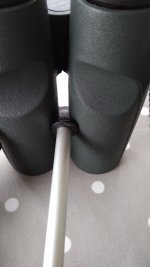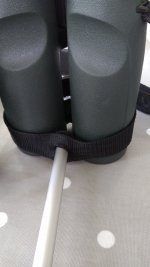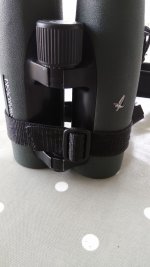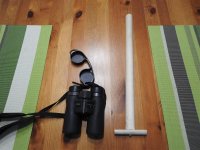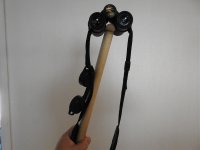Winterdune
Well-known member
Hi all,
I have been investigating the idea of dropping from x10 to x8 bins (thanks for all the advice on that thread) and in the process discovered the joys of using a stick to support binoculars, which seems to help me a lot with arm strain and stability.
So I have removed a leg from my very lightweight Manfrotto travel tripod and want to find a way to be able to attach it to my bins, as in the pictures. My DIY skills are low and my imagination worse. The best way I can think of is to use some sort of velcro loop but this would probably slip off when I didn't have the bins raised to my eyes and I want to be able to leave it on when the bins are against my chest. Any ideas from more practical folks would be most welcome!
Thanks
Sean
EDIT: added 2 pics of my first attempt...
I have been investigating the idea of dropping from x10 to x8 bins (thanks for all the advice on that thread) and in the process discovered the joys of using a stick to support binoculars, which seems to help me a lot with arm strain and stability.
So I have removed a leg from my very lightweight Manfrotto travel tripod and want to find a way to be able to attach it to my bins, as in the pictures. My DIY skills are low and my imagination worse. The best way I can think of is to use some sort of velcro loop but this would probably slip off when I didn't have the bins raised to my eyes and I want to be able to leave it on when the bins are against my chest. Any ideas from more practical folks would be most welcome!
Thanks
Sean
EDIT: added 2 pics of my first attempt...
Attachments
Last edited:




